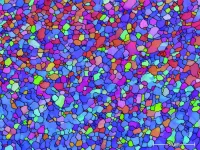(Press-News.org) Barcelona, Spain – 18 April 2023: Patients with severe COVID-19 requiring mechanical ventilation are 16 times more likely to develop ventricular tachycardia within six months compared to their peers without severe infection, according to research presented at EHRA 2023, a scientific congress of the European Society of Cardiology (ESC).1 Risks of other heart rhythm disorders were also elevated.
“The actual likelihood of developing ventricular tachycardia or other arrhythmias after severe COVID-19 is low for the individual patient, but much higher than in those without severe infection,” said study author Dr. Marcus Stahlberg of the Karolinska Institute, Stockholm, Sweden.
The objective of this study was to investigate the long-term risk of arrhythmias after discharge from an intensive care unit (ICU) for COVID-19 requiring mechanical ventilation. The researchers used the Swedish ICU register to identify all COVID-19 patients treated with mechanical ventilation and discharged alive from an ICU between March 2020 and June 2021. Each patient was matched by age, sex and district of residence with up to 10 people in the general population. Multiple compulsory national registries were used to record new diagnoses of arrhythmias after discharge from the ICU.
The primary outcome was hospitalisation with ventricular tachycardia, atrial fibrillation, other tachyarrhythmias, or bradycardia/pacemaker implantation. Ventricular tachycardia is a potentially life-threatening heart rhythm disturbance that occurs when the ventricle beats too fast to pump properly causing the body to receive insufficient oxygenated blood. Atrial fibrillation is an irregular and fast heartbeat that causes shortness of breath and raises the risk of stroke. “Other tachyarrhythmias” refers to a fast heartbeat not caused by atrial fibrillation. “Bradycardia or pacemaker implantation” is a combined endpoint of slow heart rate or need for a pacemaker due to slow heart rate.
The researchers analysed the risk of developing each arrhythmia in severe COVID-19 patients, compared to those without severe COVID-19. The analyses were adjusted for factors linked with the likelihood of heart rhythm disorders including age, sex, high blood pressure, diabetes, high blood lipids, chronic kidney disease and socioeconomic status (education level, marital status and income).
The study included 3,023 patients with severe COVID-19 who received mechanical ventilation at a Swedish ICU and 28,463 individuals from the general population who had not been in an ICU with COVID-19 requiring mechanical ventilation (control group). The average age of participants was 62 years and 30% were women. “Higher age and male sex are two important risk factors for getting severely sick with COVID-19 and this was reflected in our study participants,” said Dr. Stahlberg.
The average follow up was nine months. In patients who had severe COVID-19, the incidence rates per 1,000 person-years of ventricular tachycardia, atrial fibrillation, other tachyarrhythmias, and bradycardia/pacemaker implantation were 15.4, 78.4, 99.3 and 8.5, respectively. Corresponding incidence rates in the control group were 0.9, 6.0, 6.7 and 0.9, respectively.
Compared to the control group, patients who had severe COVID-19 requiring mechanical ventilation had a 16-fold risk of ventricular tachycardia, 13-fold risk of atrial fibrillation, 14-fold risk of other tachyarrhythmias, and 9-fold risk of bradycardia/pacemaker implantation.
Dr. Stahlberg said: “COVID-19 patients who need mechanical ventilation often have other conditions and adding a heart rhythm disorder may lead to worsened health. These patients should seek medical attention if they develop palpitations or irregular heartbeats after hospital discharge so they can be evaluated for possible arrhythmias.”
He concluded: “An increased risk of arrhythmias following COVID-19 has also been reported previously in the bulk of COVID-19 patients not requiring ICU treatment.2 Together with our new data and taking into the account that we globally have 650 million reported COVID-19 cases,3 hospital systems should prepare for an increase in patients requiring management for new onset arrhythmias.”
ENDS
END
Severe COVID-19 linked with 16-fold risk of life-threatening heart rhythm within 6 months
2023-04-18
ELSE PRESS RELEASES FROM THIS DATE:
Stereotactic radiosurgery is effective for treatment of vestibular schwannomas in neurofibromatosis type 2
2023-04-18
April 18, 2023 –Vestibular schwannomas related to neurofibromatosis type 2 (NF2) are difficult to manage and are sometimes treated with a noninvasive option, stereotactic radiosurgery. A retrospective study conducted by an international, multicenter team found that stereotactic radiosurgery is effective for patients with these tumors while preserving serviceable hearing and not causing radiation-related tumor development or malignant transformation. These results are reported in the May issue of the Congress of ...
Global study first to compare COVID-19 vaccine hesitancy among college students
2023-04-18
As the world enters a post-pandemic phase, an international study is providing unique perspectives on COVID-19 vaccine hesitancies among college students.
Researchers from Florida Atlantic University, Ariel University in Israel, and the University of West Bohemia in Pilsen, Czech Republic, are the first to perform a cross-cultural comparison to investigate factors that influenced the decision to get the COVID-19 vaccine in an international sample of college students from the United States, Israel and the Czech Republic.
The study explored associations between vaccine hesitancy and ...
New research may hold key to better treatments for aggressive brain cancer
2023-04-18
Southfield, Mich., April 18, 2023 – For decades, researchers have marveled at the ability of glioblastoma, a particularly aggressive brain cancer, to turn off a patient’s cancer-fighting immune cells, thereby allowing tumors to grow freely. This remains a primary reason why there are very few effective therapies available for this mostly fatal disease.
In a new study using more than 100 patient-derived glioblastoma tumors, Prakash Chinnaiyan, M.D., a physician scientist in the Department of Radiation Oncology at Corewell Health in Southeast, Mich., along with colleague and lead author Pravin Kesarwani, Ph.D., ...
3D printing breakthroughs to accelerate ocular drug delivery, biodegradable contact lenses & pharma research
2023-04-18
WATERLOO, Ontario, April 18, 2023—Scientists from the Centre for Ocular Research & Education (CORE) are poised to unveil multiple advancements in 3D printing next week during the ARVO 2023 Annual Meeting in New Orleans. These innovations have widespread applications, with the potential to accelerate development of drug delivery systems, biodegradable contact lenses, and pharmaceuticals.
“Our multidisciplinary team has created one of the most sophisticated 3D printing environments for ocular research in the world,” said Alex Hui, OD, PhD, FAAO, head of Biosciences at CORE. “This ...
Nullarbor rocks reveal Australia’s transformation from lush to dust
2023-04-18
Curtin researchers have discovered how long ago the Australian Nullarbor plain dried out, with a new approach shedding light on how ancient climate change altered some of the driest regions of our planet.
Iron-rich layers formed in ancient sediments were used to narrow down when an area dried out in response to changes in climate, such as the dramatic decline of groundwater in southern Australia.
These ‘relics of drying’ suggest the Nullarbor drastically shifted to dry conditions between 2.4 and 2.7 million years ago, uncovering how these environmental changes were key in shaping Australia’s diverse ...
Recycled aluminum offers energy, emissions and electric vehicle battery range savings
2023-04-18
RICHLAND, Wash.—Scrap aluminum can now be collected and transformed directly into new vehicle parts using an innovative process being developed by the automotive industry, in particular for electric vehicles. Today, the Department of Energy’s Pacific Northwest National Laboratory, in collaboration with leading mobility technology company Magna, unveils a new manufacturing process that reduces more than 50% of the embodied energy and more than 90% of the carbon dioxide emissions by eliminating the need to mine and refine the same amount of raw aluminum ore. ...
Keys to women’s resilience after 80: more education, less stress
2023-04-18
COLUMBUS, Ohio – Having a four-year college degree and a low level of stress are strongly linked to psychological resilience in American women aged 80 and older, a new study suggests.
Researchers analyzed data from the Women’s Health Initiative to identify factors that are associated with higher self-rated resilience – the ability to weather storms and rebound from setbacks – among almost 30,000 women with an average age of 84.
Other characteristics linked to higher resilience included stronger social support, higher self-rated health and a lower risk of depression than levels among women ...
Not such small things: Microplastics in our streams
2023-04-18
UC Riverside scientists are taking a modern approach to studying a murky subject — the quantity, quality, and sources of microplastics in Los Angeles County’s urban streams.
Microplastics are particles with a maximum diameter of 5 millimeters, roughly the size of a pencil eraser. The category can include nanoplastics, which are far smaller than the width of an average human hair.
Scientists have been aware that these particles have been filtering through the environment for decades, but concern about them has only started to ramp up more recently.
“There is mounting evidence that these materials are toxic,” said Andrew Gray, UCR assistant professor of ...
Researchers develop carbon-negative concrete
2023-04-18
PULLMAN, Wash. -- A viable formula for a carbon-negative, environmentally friendly concrete that is nearly as strong as regular concrete has been developed at Washington State University.
In a proof-of-concept work, the researchers infused regular cement with environmentally friendly biochar, a type of charcoal made from organic waste, that had been strengthened beforehand with concrete wastewater. The biochar was able to suck up to 23% of its weight in carbon dioxide from the air while still reaching a strength comparable to ordinary cement.
The research could significantly reduce carbon emissions of the concrete industry, which is one ...
Novel score predicts heart failure improvement after atrial fibrillation ablation
2023-04-18
Barcelona, Spain – 18 April 2023: A score based on four readily available clinical and imaging parameters identifies the heart failure patients who benefit most from atrial fibrillation ablation, according to late breaking science presented at EHRA 2023, a scientific congress of the European Society of Cardiology (ESC).1
Atrial fibrillation and heart failure often coexist.2 It is estimated that approximately 30% of patients with heart failure will develop atrial fibrillation and patients with atrial fibrillation have a five-fold increased risk of developing heart failure.3 Each condition aggravates the prognosis of the other. Atrial fibrillation patients who develop ...





